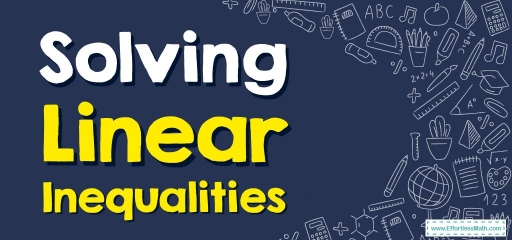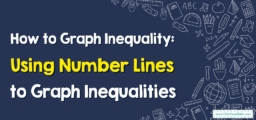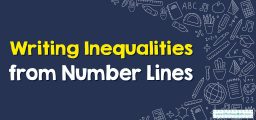How to Solve Linear Inequalities?
Inequalities are mathematical expressions in which both sides are not equal. In the following guide, you will learn more about linear inequality and solving it.
[include_netrun_products_block from-products="product/ged-math-workbook-comprehensive-math-practices-and-solutions-the-ultimate-test-prep-book-with-two-full-length-practice-tests/" product-list-class="bundle-products float-left" product-item-class="float-left" product-item-image-container-class="p-0 float-left" product-item-image-container-size="col-2" product-item-image-container-custom-style="" product-item-container-size="" product-item-add-to-cart-class="btn-accent btn-purchase-ajax" product-item-button-custom-url="{url}/?ajax-add-to-cart={id}" product-item-button-custom-url-if-not-salable="{productUrl} product-item-container-class="" product-item-element-order="image,title,purchase,price" product-item-title-size="" product-item-title-wrapper-size="col-10" product-item-title-tag="h3" product-item-title-class="mt-0" product-item-title-wrapper-class="float-left pr-0" product-item-price-size="" product-item-purchase-size="" product-item-purchase-wrapper-size="" product-item-price-wrapper-class="pr-0 float-left" product-item-price-wrapper-size="col-10" product-item-read-more-text="" product-item-add-to-cart-text="" product-item-add-to-cart-custom-attribute="title='Purchase this book with single click'" product-item-thumbnail-size="290-380" show-details="false" show-excerpt="false" paginate="false" lazy-load="true"]

In inequality, unlike in equations, we compare two values. The equal sign in between is replaced by less than (or less than or equal to), greater than (or greater than or equal to), or not equal to sign.
Related Topics
A step-by-step guide to solving linear inequalities
Polynomial inequalities are inequalities that can be expressed as polynomials on one side and zeros on the other. There are many types of polynomial inequalities, but the most important are:
- Linear Inequalities
- Quadratic Inequalities
Solving linear inequalities
A linear inequality is an inequality that can be expressed by a linear expression on one side and a \(0\) on the other. Solving linear inequalities is like solving linear equations, but only the rules for solving inequalities must be observed.
Solving one-step inequalities
Consider an inequality of \(3x<6\). To solve it, just one step is enough to divide both sides by \(3\). Then we get \(x<2\). Therefore, the solution to the inequality is \(x < 2\) or \((-∞, 2)\).
Solving two-step inequalities
Consider an inequality \(-2x + 3> 6\). To solve this, we need two steps. The first step is subtracting \(3\) from both sides, which gives \(-2x > 3\). Then we need to divide both sides by \(-2\) and it results in \(x < -\frac{3}{2}\) (note that we have changed the sign of the inequality). So the solution of the inequality is \(x < -\frac{3}{2}\) or \((-∞, -\frac{3}{2})\).
Solving compound inequalities
Compound inequalities refer to the set of inequalities with either “and” or “or” in-between them. For solving inequalities, in this case, just solve each inequality independently and then find the final solution according to the following rules:
- The final solution is the intersection of the solutions of independent inequalities if we have “and” between them.
- The final solution is the union of the solutions of the independent inequalities if we have “or” between them.
Solving Linear Inequalities – Example 1:
Solve the compound inequality \(2x + 3< -5\) and \(x + 6 < 3\).
Solution:
By first inequality:
\(2x + 3 < -5\)
\(2x < -8\)
\(x < -4\)
Second inequality,
\(x + 6 < 3\)
\(x < -3\)
Since we have “and” between them, we have to find the intersection of the sets \(x< -4\) and \(x<-3\). Then the final solution is: \(x< -4\) or \((-∞, -4)\).
Exercises for Solving Linear Inequalities
Solve each inequality and write the answer in the interval notation.
- \(\color{blue}{-21< 2x+3\le17}\)
- \(\color{blue}{7x-5\ge 65\:or\:-3x-2\ge -2}\)
- \(\color{blue}{3x+1\le 3\:\:and\:-2x\le 6}\)
- \(\color{blue}{-20<\frac{1}{4}x+2\le 8}\)
- \(\color{blue}{(-12,7]}\)
- \(\color{blue}{(-\infty \:,\:0]\cup \:[10,\:\infty \:)}\)
- \(\color{blue}{\:\left[-3,\:\frac{2}{3}\right]}\)
- \(\color{blue}{\:(-88,\:24]}\)
Related to This Article
More math articles
- What is the Best Laptop for College Students?
- Top 10 Tips to Overcome SHSAT Math Anxiety
- Full-Length 7th Grade MCAS Math Practice Test-Answers and Explanations
- Full-Length GED Math Practice Test-Answers and Explanations
- Top 10 7th Grade MCAS Math Practice Questions
- A Step into The World of Calculus: Rules of Differentiation
- Number Properties Puzzle – Challenge 11
- Geometry Puzzle – Challenge 63
- FREE 5th Grade Common Core Math Practice Test
- Top 10 Tips You MUST Know to Retake the TASC Math
























What people say about "How to Solve Linear Inequalities? - Effortless Math: We Help Students Learn to LOVE Mathematics"?
No one replied yet.